RETRO – You’re behind the wheel, hands on the wheel, while the car engine roars softly. On the seat next to you is a Tommy gun and a baseball bat with blood splattered on it, a 1911 Colt watches in your holster, and in your pocket is a switchblade. You’re Tommy Angelo, feared ’20s mobster and excellent driver, Don’s favourite and right-hand man, the city’s number one public enemy. You started out as a pint-sized taxi driver, but now you’ve got almost everything you ever wanted: money, recognition and a beautiful wife. And yet you can’t be happy because you know that one day your own friend will shoot you in the back…
Well… the Czechs can do it! That’s pretty much the feeling I had when I watched the credits roll after the cathartic ending of Mafia. The latest car action game from Illusion Softworks not only thumbed its nose at Grand Theft Auto III, but also thoroughly outclassed the great classic at several points. Yet, apart from the completely different ore (unlike the modern era of GTA III, Mafia is set in the 1920s), it’s essentially a similar title. Here, too, you have to use various cars or on foot to carry out a wide variety of dirty little missions: robbery, murder, bombing and other forms of crime.
The crimes themselves are similar: “El Padre” has us shoot mobs of gangsters with a rifle, gas them to death, smash their heads in with a baseball bat, and more aggressive deaths than GTA III. And in this game, you can also drive and walk around a huge city full of walkers. But there’s also no sense that Mafia is just a copy of Rockstar’s classic.
A story Coppola could envy
The first obvious difference between GTA III and Mafia is the structure. In Rockstar’s game, we were given a huge amount of freedom to drive around the city on a variety of missions, from simple taxi driving to dirty little jobs for petty criminals to big bosses. The story wasn’t as elaborate, but the freedom made up for it. The Mafia, on the other hand, has a truly professional, cinematic storyline, comparable to classic movies (Godfather I-III, The Big Men, Once Upon a Time in America, Borsalino).
At the beginning of the game we start as a simple taxi driver, but after hiring the gangsters of a job gone wrong, their boss Don Salieri, a full-time mobster and part-time bar owner, offers us a job, which our hero accepts perhaps too quickly… From there Tommy is completely caught up in the whirlwind, and after the first murder he gets involved in increasingly risky and bloody assignments. While at first he only kills in self-defence, later he takes on assassinations and often has to spill the blood of innocent people (relatively…) during his missions. This killing was, of course, also a feature of GTA III, but unlike the silent and cold protagonist there, Tommy is constantly wracked with remorse, and suffers most when he has to take out a friend or a woman.
So the protagonist in Mafia is much more human, and we can relate to him much more. Lastly, I must mention the brilliant idea, which we have only seen in classic films, of Tommy himself telling the story to a cop, because he has regretted his life and given himself and the “family” that betrayed him in exchange for protection…
From taxi driver to hotshot
Like any game with a carefully crafted story, Mafia is inherently more linear than its counterparts. For example, at the start of the game, like GTA III, you’re given taxi missions, but this time you can’t just pick up anyone anywhere, you have to take clients from predetermined locations to their destinations. So at the beginning of the game we get a sort of mandatory sightseeing and exploration “education” so that we don’t have to struggle so much with looking at the map during the missions. (We still will…)
This linearity will continue to be a feature of the game later on, as missions are given to you in a traditional sequential fashion, and you can’t progress in the game or do anything else until you’ve completed your mission. This is supposed to be a step backwards compared to GTA III, but the cinematic, often fantastical animations that are used to get through the game are so exciting that we almost don’t notice this ‘shortcoming’.
After the first peaceful taxi mission, the action kicks in immediately: Don Morelli, the leader of a rival gang, finds your taxi and sends some of his men to you to tear your vehicle apart and make you into a burger, with lots of ketchup. Now you have to run for your life: luckily, Don Salieri, the “godfather” of the two gangsters you saved, is waiting with open arms in his bar for you to join his family. In the next mission, you can avenge your injuries by blowing up the cars of Morelli’s men on the Don’s orders. Of course, if you join the mafia, you’ll have to spill blood, and in the next mission, you’ll undergo your first baptism of fire in a classic cinematic scene.
Action, blood, romance and…
In Mafia, the emphasis is more on the shooting: you’ll be driving a lot, but you’ll be using a gun or rifle to take out the mobsters attacking you in Max Payne fashion a lot more often than in GTA III. A lot of the missions are similar to Hitman: Codename 47: find a way to get to the target gangster boss, kill half his army on the way, and then run away when you’re done, machine-gunning more bad guys. In Mafia’s “defence”, these missions are both more enjoyable than in Hitman because of the cinematics and the overall atmosphere, and somehow more authentic, since a gangster is not necessarily known for approaching his victims quietly and inconspicuously, like a hitman.
The action sequences are otherwise quite difficult and unpredictable. Since you can’t save a job, you have to use every nerve to make sure that the hiding spaghetti-eating mobsters don’t shoot you dead. If we want to play Bruce Williams – by shooting everyone alive and moving at lightning speed – we’ll soon be dead, because gangsters like to hide and then pounce on us at the most unexpected moment. If we do mess up and push back from the start of the track (which will happen often in some missions…), it’s no use searching the same places, because some gangsters will appear in completely different places. Also, the AI of the enemy is (partly…) very professionally worked out: if you are outnumbered, they will surround you to take you down, but if you shoot back, they will take cover too.
Fortunately, the game is fair in the sense that the enemy gangsters also run out of ammunition, and it’s not hard to take out a guy who’s charging at us with his fists… Of course, it’s not always worth waiting until they’ve unloaded their whole magazine: since we’re low on ammo too, it’s often more useful to finish off the owners of the better weapons as soon as possible so that we can grab the ammo. While I’m on the subject of Hitman, I can’t get past the lack of in-mission saves. This brings up the eternal problem of whether it’s worse to reload before each shot, ruining the experience, or to swear by having to constantly restart the map from the beginning. Fortunately, the situation is not as bad as in Hitman, where you had to complete a long mission without a single save, but the creators could have been a bit more generous with the automatic save on one or two missions…
However, it’s a good point for the developers that they paid attention to the variety of the missions, and that they included some quite original tasks. In one of them, for example, we have to escort Sarah home because some bad guys have made rude remarks about her. Before we confront them to save her from rape, we have to have a chat with her on the way to her flat. Brilliant idea! After the chivalrous deed, we’re rewarded with a reward in the arms of a grateful Sarah – finally, a game where we’re taken seriously, as we get to witness a little cinematic eroticism.
Drive smart (and without a gun…)!
So the story is more elaborate, the shoot-outs are more exciting, bloodier and action-packed, and there are some original missions – but what else does Mafia have to beat its predecessor? Well, unlike the arcade madness of GTA III, Mafia is much more realistic. The cars of the era are rendered in amazing detail, whether it’s in terms of acceleration, top speed or ‘horsepower’. At the beginning of the game, for example, the first few cars will barely drag on the roads, and the worst part is that they slow down brutally on the uphills (even on the inner side of the Golden Gate bridge!)!
Later, of course, you can get or steal (because you can do that here too) better cars that are supposed to ‘speed’, but the problem is that you are in a big city where the speed limit is enforced with a heavy hand by the cops. If you ‘speed’ on the streets at even a little over forty kilometres an hour, the law and order officers will be on you like an unstoppable bulldog, and if you don’t stop to pay the fine (fortunately, or unfortunately, money is not an issue in this game), they will chase you mercilessly. But that’s not all: the fakabats will also watch you run a red light and will come after you just as if you were speeding! (Thank God, the makers have ignored the other rules of the road, because I’m not very familiar with them.) As well as driving properly, you also have to be careful not to “forget” to take a mordal in your hand, because the cops are allergic to them too, and if you’re on foot they’ll pounce on you.
I have to make my first criticism of the behaviour of the police: on the one hand, how the hell did they know in the twenties, without any radar, traffipax or other speed measuring equipment, that I was doing forty-one kilos, not forty?! On the other hand, this realism is fun, but sometimes it can get on your nerves when you have to go even slower with vehicles that are not rocket speed! Fortunately, the city is so fantastically atmospheric, with its many twenties bars, shops, hairdressers, cinemas and other establishments, its high-flying subway, the trams that tinkle through the streets and, of course, the sight of passers-by following the fashions of the time, that even the most dedicated Quaker will find the speed limit an unforgivable sin.
Lost Paradise of Lost Heaven
Talking about the look of the city, it’s definitely worth talking about the food. The game’s graphics engine is based on LS3D, which will be used in Hidden and Dangerous II. Lost Heaven really shines in both the exterior and interior of the buildings, with rich, detailed textures, beautiful rooms and furniture. Where Mafia absolutely beats the competition, however, is in the detailing of the human figures, especially the hairstyles – I’ve never really seen anything like it in any game.
Maybe they could have done a bit more with the hands, which are a bit angular, but that’s really just a wormhole. I also really liked the way the different characters were dressed, you can tell that the creators spent a lot of time studying the period-specific details. In addition to the graphics, the sounds of the city from all over the place and the excellent music are worth mentioning: beyond the more bouncy action numbers, connoisseurs will certainly recognise the famous jazz melodies.
You will not refuse this game…
So I can only speak superlatively about Mafia, but a few annoying little flaws do spoil the overall picture. I’ve already written about the placement of quick-save points: it really wouldn’t have hurt to put them in more often, because it’s frustrating when you have to start from the very beginning of a huge and difficult map. Fortunately, Mafia is basically a good enough game that you don’t uninstall it in a frenzy because you can’t get past a certain point, as is the case with many other similar titles. I have praised AI, but I must add that for all its cleverness, it can sometimes (thankfully rarely) behave in incredibly stupid ways.
For example, various vehicles have occasionally created a good traffic jam for no reason at all, and there have also been times when a fleeing mafia boss has got stuck in some absurd place and been unable to escape for goodness sake. (According to the story, I could only kill him in the next mission, so I couldn’t “help” his plight either.) Finally, I noticed some outdated features of the wonderful new graphics engine: the corners are incredibly square, for example, and the wheels on the cars aren’t round. (I mean, they’re not round.) But these are just nitpicks when you look at the big picture of this great game.
-BadSector-(2002)
Pro:
+ fantastic contemporary atmosphere
+ captivating story
+ the perfect mix of action by car and “on foot”
Against:
– minor bugs in the graphics engine
– some AI problems
– one or two rubbishly placed save points
Publisher: Gathering of Developers
Developer: Illusion Softworks
Style: TPS, car action game
Release date: 2002
Mafia: The City of Lost Heaven
Gameplay - 9.2
Graphics (2002) - 9.4
Story - 9.8
Music/Audio - 9.8
Ambience - 9.7
9.6
MASTERPIECE
So I can only speak superlatively about Mafia, but a few annoying little flaws do spoil the overall picture. I've already written about the placement of quick-save points: it really wouldn't have hurt to put them in more often, because it's frustrating when you have to start from the very beginning of a huge and difficult map. Fortunately, Mafia is basically a good enough game that you don't uninstall it in a frenzy because you can't get past a certain point, as is the case with many other similar titles. I have praised AI, but I must add that for all its cleverness, it can sometimes (thankfully rarely) behave in incredibly stupid ways. For example, various vehicles have occasionally created a good traffic jam for no reason at all, and there have also been times when a fleeing mafia boss has got stuck in some absurd place and been unable to escape for goodness sake. (According to the story, I could only kill him in the next mission, so I couldn't "help" his plight either.) Finally, I noticed some outdated features of the wonderful new graphics engine: the corners are incredibly square, for example, and the wheels on the cars aren't round. (I mean, they're not round.) But these are just nitpicks when you look at the big picture of this great game.

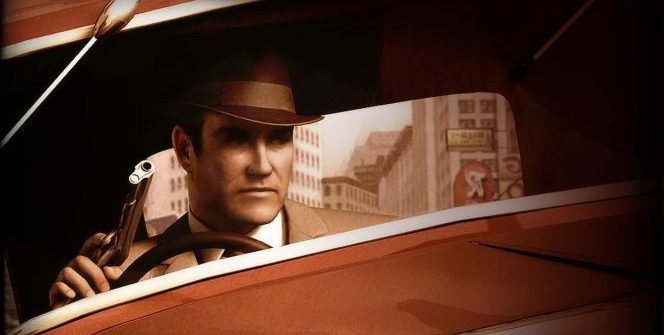






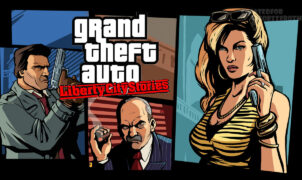
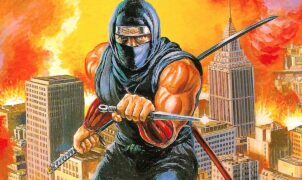
![Vampire: The Masquerade - Bloodlines – Prepare for Your Final Sunset! [RETRO-2004]](https://thegeek.games/wp-content/uploads/2025/10/theGeek-Vampire-the-Masquerade-Bloodlines-302x180.jpg)


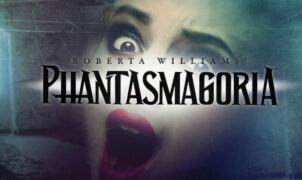
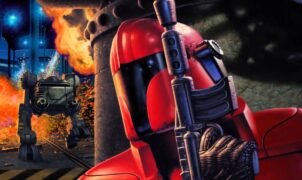
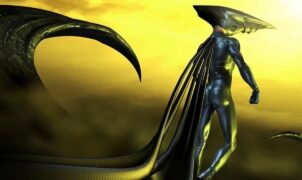

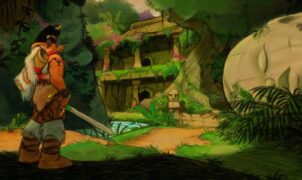
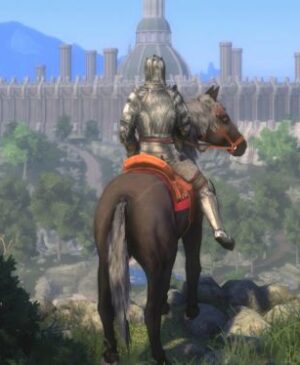



Leave a Reply